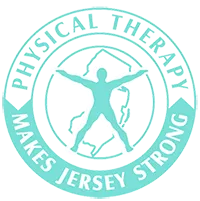New Jersey Rehab Experts
Specializing in comprehensive orthopedic care, New Jersey Rehab Experts offers a wide range of services including Physical Therapy, Sports Physical Therapy, Dry Needling, Chiropractic Care, Neuropathy Treatment, Pain Management, and Manual Therapy. Our state-of-the-art facility is staffed by board-certified therapists dedicated to delivering top-tier care, ensuring you achieve optimal recovery and wellness.
Clinic Located in Jersey City (Newport), Secaucus and Clifton
Genuine Feedback from
Our Patients
Our Affiliations






Explore Our Diverse Range of Disciplines
Discover a world of exceptional care customized for all ages! Our dedicated professionals deliver top-notch medical attention, expert rehabilitative therapy, and warm companion care for adults, seniors, and young patients. Experience personalized healthcare with a heart!

Orthopedic Physical Therapy
Specialized care for musculoskeletal injuries, surgeries, and chronic conditions affecting bones, joints, muscles, ligaments, and tendons.
- Sports injuries
- Arthritis management
- Post-surgical rehab

Geriatric Physical Therapy
Specialized care for older adults, addressing age-related changes affecting balance, strength, mobility, and independence.
- Fall prevention
- Balance training
- Mobility enhancement

Sports Physical Therapy
Specialized rehab for athletes of all levels, from weekend warriors to professionals, focusing on injury recovery and performance enhancement.
- ACL rehab
- Return-to-play testing
- Performance optimization

Vestibular Rehabilitation
Specialized therapy for dizziness, vertigo, and balance disorders stemming from inner ear and balance system dysfunction.
- BPPV treatment
- Balance retraining
- Dizziness management

Men's Health Physical Therapy
Specialized care for pelvic floor dysfunction and related issues, providing discreet, effective treatment for men's specific health needs.
- Pelvic pain relief
- Post-prostatectomy rehab
- Urinary dysfunction

Motor Vehicle & Work Injury Rehab
Specialized care for car accidents and workplace injuries, with expert documentation and coordination with insurance providers.
- Whiplash treatment
- Workers' comp cases
- Personal injury claims

Manual Therapy
Hands-on approach using specialized techniques to relieve pain, improve mobility, and accelerate healing naturally.
- Mulligan Mobilizations
- McKenzie Method
- Myofascial Release

Dry Needling
Modern technique using thin, sterile needles to target trigger points, releasing muscle tension and restoring normal function.
- Back & neck pain
- Headaches & migraines
- Sports injuries
Ready to start your recovery journey?
Our expert therapists are ready to help you live pain-free and regain your mobility.
Our Advantages
Specialized Programs for Every Need
From orthopedic rehab and sports therapy to vestibular, pelvic health, and post-injury recovery, we provide comprehensive, patient-focused solutions.
State-of-the-Art Techniques & Technology
We use cutting-edge treatments like dry needling, spinal manipulation, Mulligan & McKenzie techniques, Fit3D scans, Shockwave Therapy , Cupping and more to accelerate healing.
Personalized One-on-One Care
Every patient receives individualized treatment plans with hands-on attention to ensure faster recovery and long-term results.
Trusted by Athletes & Community Leaders
Official providers for multiple cricket teams and a member of respected healthcare associations—our reputation speaks for itself.
Multiple Convenient Locations Across NJ
With clinics in Jersey City, Secaucus, Clifton , and beyond, we’re always within reach—offering flexible scheduling and bilingual support.
Seamless Support for Injury Claims & Recovery
We coordinate care with attorneys, physicians, and insurers for patients recovering from motor vehicle or work-related injuries, ensuring smooth documentation and stress-free rehab.
Meet Our Team

Sunny Thakkar PT, MS ( Exercise Physiologist)
Physical Therapist

Ashish Sinha, PT, DPT
Physical Therapist

Dr. Rohit Farzala PT, DPT
Physical Therapist
About Us


Experience rapid rejuvenation as our specialist team harnesses the power of advanced healing tech to erase pain with ease. We dive deep into your world, assessing every piece of the puzzle—stress at work, life pressures, physical health, nutrition, genes, posture, and even emotional ties—crafting a tailor-made wellness blueprint that's as unique as you are. With our dedicated holistic touch, we don't just treat symptoms; we empower you to embrace a pain-free, harmonious life.
Ask a Question

Understanding Ankle Stress Fractures: Recovery Time, Tips, and Rehab Strategies for a Swift Return to Activity
Understanding Ankle Stress Fractures: Recovery Time, Tips, and Rehab Strategies for a Swift Return to Activity
Ankle stress fractures can turn the most active lives upside down. Whether you're an athlete pushing your limits or someone navigating daily tasks, the sudden pain and limited mobility can be daunting. Understanding the intricacies of these injuries is crucial not just for recovery, but also for a swift return to your favorite activities. In this comprehensive guide, we delve into the recovery time you can expect and share effective tips and rehab strategies tailored to expedite healing. With the right knowledge and approach, you can turn the setback of an ankle stress fracture into an opportunity for growth and resilience. Discover how to navigate this challenging journey while minimizing downtime and maximizing your return to activity!
What is an ankle stress fracture?
An ankle stress fracture is a small crack in one of the bones in the ankle, often resulting from overuse or repetitive force. Unlike acute fractures caused by a single traumatic event, stress fractures develop gradually over time. They are common among athletes, particularly those involved in high-impact sports like running, basketball, and soccer. The repetitive strain placed on the bones exceeds their ability to heal and remodel, leading to microscopic cracks that can expand if not addressed.
These fractures can occur in any of the bones that make up the ankle, including the tibia, fibula, and talus. The severity of an ankle stress fracture can vary, with some individuals experiencing only mild discomfort while others endure significant pain and swelling. Without proper treatment, a stress fracture can worsen, potentially leading to a complete break or long-term complications.
Understanding the nature of an ankle stress fracture is essential for effective management and recovery. Early detection and intervention can prevent further damage and facilitate a quicker return to normal activities. Recognizing the signs and symptoms, as well as the underlying causes, is the first step in addressing this common injury.
Common causes and risk factors for ankle stress fractures
Several factors can contribute to the development of an ankle stress fracture. One of the primary causes is repetitive stress on the bones of the ankle, often from activities that involve running, jumping, or other high-impact movements. Athletes who suddenly increase the intensity, duration, or frequency of their training are particularly susceptible to stress fractures, as their bones have not had sufficient time to adapt to the increased load.
Biomechanical issues can also play a significant role in the development of stress fractures. Abnormal foot mechanics, such as overpronation or supination, can lead to uneven distribution of forces across the ankle, increasing the risk of injury. Additionally, imbalances in muscle strength and flexibility can place undue stress on the bones, further contributing to the likelihood of a fracture.
Other risk factors include poor nutrition, which can compromise bone health, and underlying medical conditions such as osteoporosis or hormonal imbalances. Female athletes, in particular, may be at higher risk due to the female athlete triad, a condition characterized by disordered eating, amenorrhea, and decreased bone density. Understanding these risk factors can help individuals take proactive measures to prevent stress fractures and maintain optimal bone health.
Symptoms and diagnosis of ankle stress fractures
The symptoms of an ankle stress fracture can vary depending on the severity and location of the injury. Common signs include a gradual onset of pain that worsens with weight-bearing activities and improves with rest. Swelling, tenderness, and bruising around the ankle may also be present. In some cases, individuals may experience a dull ache that persists even during periods of inactivity.
Diagnosing an ankle stress fracture typically involves a combination of a thorough medical history, physical examination, and imaging studies. During the physical exam, the healthcare provider will assess the affected area for tenderness, swelling, and range of motion. They may also perform specific tests to determine the exact location and severity of the fracture.
Imaging studies, such as X-rays, are often used to confirm the diagnosis. However, stress fractures may not be visible on X-rays in the early stages, necessitating the use of more advanced imaging techniques like magnetic resonance imaging (MRI) or bone scans. These modalities can provide detailed images of the bone and surrounding tissues, allowing for a more accurate diagnosis and appropriate treatment plan.
Recovery time: What to expect
The recovery time for an ankle stress fracture can vary widely depending on the severity of the injury, the individual's overall health, and their adherence to the prescribed treatment plan. On average, most stress fractures take about six to eight weeks to heal, although some cases may require a longer period of rest and rehabilitation.
During the initial phase of recovery, it is crucial to minimize weight-bearing activities to allow the bone to heal properly. This often involves using crutches or a walking boot to immobilize the affected area and reduce stress on the fracture site. Pain and swelling typically begin to subside within the first few weeks, but it is essential to continue following medical advice to prevent re-injury.
As the healing process progresses, a gradual return to activity is recommended. This phase should be carefully monitored and guided by a healthcare professional to ensure that the bone is fully healed and can withstand increased stress. Patience and adherence to the rehabilitation plan are key to a successful recovery and preventing future stress fractures.
Importance of rest and immobilization during recovery
Rest and immobilization are critical components of the recovery process for an ankle stress fracture. Allowing the bone sufficient time to heal without additional stress is essential for preventing complications and ensuring a full recovery. Immobilization, often achieved through the use of a walking boot or cast, helps stabilize the fracture site and reduces the risk of further injury.
During the initial phase of recovery, it is important to avoid activities that put pressure on the affected ankle. This means refraining from running, jumping, or any other high-impact exercises. Instead, focus on low-impact activities that do not exacerbate the injury, such as swimming or cycling, if approved by your healthcare provider.
Adhering to the prescribed rest and immobilization period can be challenging, especially for active individuals eager to return to their regular routines. However, patience and compliance with medical advice are crucial for a successful recovery. Rushing the healing process can lead to re-injury or prolonged recovery time, ultimately delaying your return to activity.
Effective rehabilitation strategies for ankle stress fractures
Rehabilitation is a vital aspect of recovering from an ankle stress fracture. A well-structured rehabilitation program can help restore strength, flexibility, and function to the injured area, reducing the risk of future injuries. The rehabilitation process typically begins after the initial phase of rest and immobilization, once the bone has started to heal.
Physical therapy plays a central role in the rehabilitation process. A physical therapist can design a personalized exercise program that targets the specific needs of the individual. This may include range-of-motion exercises to improve joint flexibility, strengthening exercises to build muscle support around the ankle, and balance training to enhance stability.
Gradual progression is key to a successful rehabilitation program. Starting with gentle, low-impact exercises and gradually increasing the intensity and duration of activities can help prevent re-injury. Consistent adherence to the rehabilitation plan and regular follow-up with healthcare professionals can ensure a smooth and effective recovery process.
Tips for managing pain and inflammation
Managing pain and inflammation is an important aspect of recovering from an ankle stress fracture. Pain and swelling can significantly impact daily activities and hinder the healing process. Several strategies can help alleviate these symptoms and promote a more comfortable recovery.
Rest and elevation are fundamental in reducing pain and swelling. Keeping the affected ankle elevated above heart level can help decrease fluid buildup and alleviate discomfort. Cold therapy, such as applying ice packs to the injured area, can also be effective in reducing inflammation and numbing pain. It is important to apply ice for 15-20 minutes at a time, several times a day, to achieve optimal results.
Over-the-counter pain medications, such as acetaminophen or nonsteroidal anti-inflammatory drugs (NSAIDs), can provide additional relief from pain and inflammation. However, it is important to use these medications as directed and consult with a healthcare provider before starting any new medication regimen. In some cases, a healthcare professional may prescribe stronger pain medications or recommend alternative therapies, such as physical therapy modalities or acupuncture, to manage pain and promote healing.
When to return to activity: Signs of readiness
Determining the right time to return to activity after an ankle stress fracture is crucial for preventing re-injury and ensuring a safe and effective recovery. Several factors should be considered when assessing readiness to return to activity, including the healing progress, pain levels, and overall functional ability.
One of the primary indicators of readiness to return to activity is the absence of pain during weight-bearing activities. If you can walk, stand, and perform daily tasks without discomfort, it is a positive sign that the bone has healed sufficiently. However, it is important to avoid rushing the process and to gradually reintroduce higher-impact activities, such as running or jumping, to allow the bone to adapt to increased stress.
Functional assessments, often conducted by a physical therapist or healthcare provider, can help determine readiness to return to activity. These assessments may include tests of strength, flexibility, balance, and endurance to ensure that the injured ankle can withstand the demands of your chosen activities. Listening to your body and following medical advice are essential in making a safe and successful return to activity.
Preventive measures to avoid future stress fractures
Preventing future ankle stress fractures involves addressing the underlying risk factors and making proactive changes to reduce the likelihood of injury. Several strategies can help promote bone health, improve biomechanics, and minimize the risk of stress fractures.
Maintaining a well-balanced diet rich in calcium and vitamin D is essential for bone health. These nutrients play a crucial role in bone remodeling and strength. Additionally, incorporating weight-bearing exercises, such as walking or resistance training, into your routine can help build and maintain bone density. Avoiding sudden increases in activity intensity or duration and allowing adequate time for rest and recovery can also help prevent stress fractures.
Proper footwear is another important consideration in preventing stress fractures. Wearing shoes that provide adequate support, cushioning, and stability can help reduce the impact on your ankles and improve biomechanics. Custom orthotics or insoles may be beneficial for individuals with specific foot mechanics issues, such as overpronation or supination, to ensure even distribution of forces across the ankle.
Regularly incorporating stretching and strengthening exercises into your routine can help improve muscle balance and flexibility, reducing the risk of stress fractures. Focusing on exercises that target the muscles surrounding the ankle, such as calf raises, ankle circles, and resistance band exercises, can provide additional support and stability to the joint.
Conclusion: Emphasizing the importance of proper recovery
Recovering from an ankle stress fracture requires a comprehensive approach that includes rest, immobilization, rehabilitation, and preventive measures. Understanding the nature of the injury, recognizing the symptoms, and seeking prompt medical attention are crucial steps in ensuring a successful recovery. Adhering to the prescribed treatment plan, managing pain and inflammation, and gradually returning to activity can help facilitate the healing process and reduce the risk of future injuries.
Patience and persistence are key to navigating the recovery journey. While it may be tempting to rush back into your regular activities, allowing adequate time for the bone to heal and following medical advice can prevent complications and ensure a safe return to activity. Emphasizing the importance of proper recovery and taking proactive steps to prevent future stress fractures can help you maintain an active and healthy lifestyle.
By understanding ankle stress fractures and implementing effective recovery and prevention strategies, you can turn the setback of an injury into an opportunity for growth and resilience. With the right knowledge and approach, you can minimize downtime, maximize your return to activity, and continue pursuing your passions with confidence.
No matter whether your condition was caused by a sport, work accident or otherwise,
we welcome the chance to serve you.
Opening Hours





